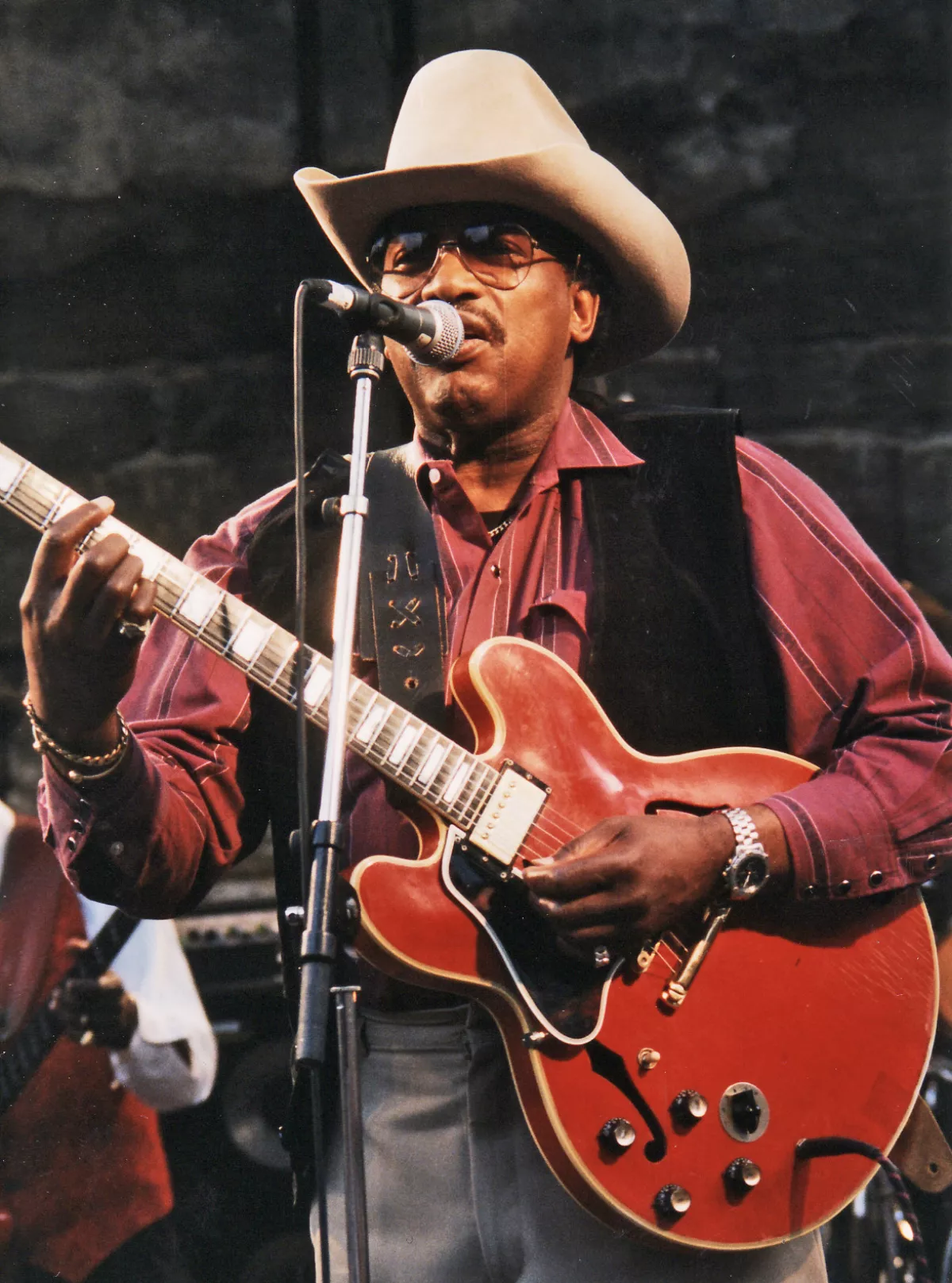 1.
1. Albert King, from whom Otis borrowed licks, Jimi Hendrix, and Eddy "the Chief" Clearwater played the same way, though Otis' sound was otherworldly.

 1.
1. Albert King, from whom Otis borrowed licks, Jimi Hendrix, and Eddy "the Chief" Clearwater played the same way, though Otis' sound was otherworldly.
Otis Rush had the low strings adjusted very low, and the G, B, and high E strings adjusted for slightly higher action, so he could curl his left pinky under the low strings and pull them down, sometimes two or three at a time.
Otis Rush ran his amplifiers in such a way that he could sustain his notes.
Otis Rush liked to wring out every sustainable note from his guitars.
Otis Rush said T-bone Walker was one of the best guitar players because he was a great rhythm guitarist, as well as a great soloist.
Otis Rush always felt that if one could not play rhythm guitar very well, and were just a soloist, one would not be a complete guitar player.
Otis Rush was born near Philadelphia, Mississippi, in 1934 during the Great Depression, the son of sharecroppers Julia Campbell Boyd and Otis C Rush.
Otis Rush was one of seven children, and worked on the farm throughout his childhood.
Otis Rush sang in gospel choirs and taught himself to play guitar and harmonica, playing on street corners.
Otis Rush moved to Chicago, Illinois, in 1949 and, after being inspired by watching Muddy Waters, worked on his craft and made a name for himself playing in blues clubs on the South and West Sides of the city, initially using the name Little Otis Rush.
Otis Rush got tired of touring and went back to Chicago, playing clubs again and drawing good crowds, though for the most part, his Cobra sides did not chart nationallyo despite their excellence.
Otis Rush followed Dixon to Chess Records and signed a recording contract with them in 1960.
Otis Rush recorded eight tracks for the label, though they only released four, two singles, including the blistering, emotion drenched classic, "So Many Roads".
Otis Rush began playing in other cities in the United States and Europe during the 1960s, earning a place with the American Folk Blues Festival touring Europe and securing several years of bookings at the Ann Arbor Blues festival.
In 1971, Otis Rush recorded the album Right Place, Wrong Time in San Francisco for Capitol Records' though Capitol did not release it.
Live performances of the blues were a new and rare event in Japan when Otis Rush went there in 1975.
Otis Rush made a comeback in 1985 with a US tour and the release of a live album, Tops, recorded with a tight West Coast band at the San Francisco Blues Festival to favorable reviews.
Otis Rush turned down an invitation from the Rolling Stones to record and tour with them.
Otis Rush backed away from Johnny Winter's offer of potentially reviving his career, as he did for Muddy Waters, by producing a record for him on Winters' Blue Sky label, and recording with Carlos Santana, who adored him, never worked out.
Otis Rush did not record a new studio album after 1998, though he continued touring and performing until 2003, when he suffered a stroke.
The director of the film, Rob Zombie, an Otis Rush fan, used the original Cobra recording for the soundtrack.
In June 2016, Otis Rush made a rare appearance at the Chicago Blues Festival in Grant Park.
Otis Rush was unable to play because of ongoing health problems, but he was there with his family.
Otis Rush elected to the Blues Hall of Fame in 1984.
Otis Rush died on September 29,2018, from complications of a stroke.